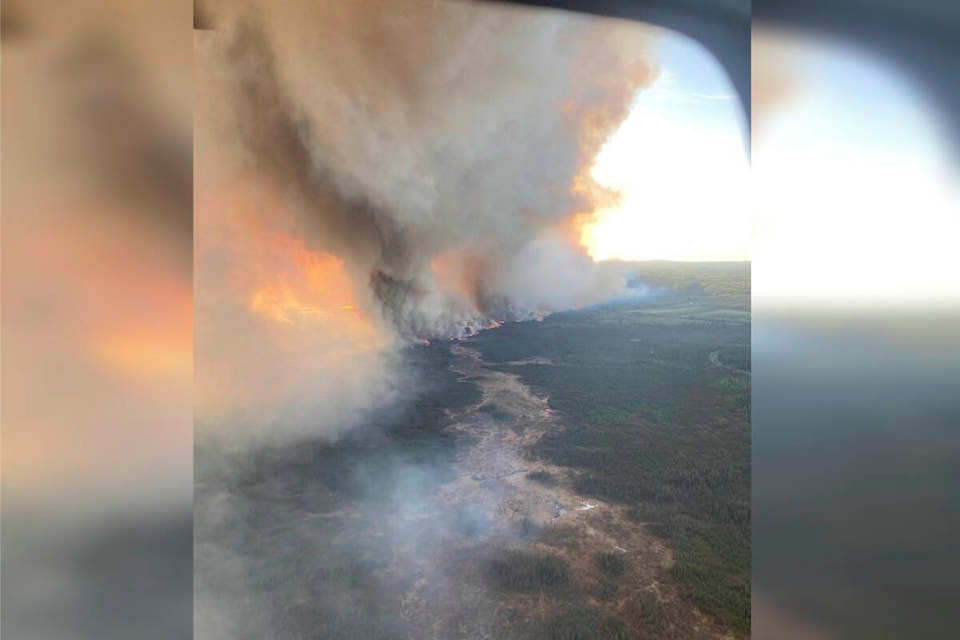The wildfire that forced almost 5,000 people to flee is now burning just 2.5 kilometres from the community of Fort Nelson.
“Everything is focused on the protection of the community of Fort Nelson and Fort Nelson First Nation,” Cliff Chapman, director of provincial operations with the B.C. Wildfire Service, said Monday (May 13) during a joint update with B.C.’s Emergency Management Minister Bowinn Ma. “That is where all of our resources are assigned.”
The human-caused Parker Lake wildfire expanded rapidly since its discovery on May 10. It has grown to 5,280 hectares and is only expected to worsen in the next 24 to 48 hours with strong western winds expected to pick up in the region. The region’s prolonged drought is also contributing to what Chapman called “extreme fire behaviour,” which crews are currently encountering.
“So ground operations are often compromised, so our focus really is about trying to do structure protection, structure defence and reinforce our guards on this fire, using heavy equipment and air support,” he said.
Chapman said 69 B.C. Wildfire Service staff are currently on site with additional resources on the way. Other available resources include six fixed-wing air tankers and 19 helicopters, he added.
Chapman said B.C. Wildfire Service is mobilizing additional resources from within the service in responding to the Fort Nelson as well as other fires in the Prince George Fire centre.
“Additionally, we have tremendous support from municipal fire departments and local governments in response to both the Parker Lake wildfire and any other additional fires we have in the Prince George Fire Centre,” he said. “At this time, we do not require additional resources from outside (B.C.).”
But he added that those outside resources can become available quickly, when needed.
“I think we need to realize that this is a very active situation right now,” Ma said, when asked to rate the probability of property damage. “The focus is on fighting the fire and on keeping evacuees safe and supporting evacuees during what is likely to be one of the most difficult times in their lives.”
Ma acknowledged that people will have questions about existing and projected damages.
“Now is not the time to talk about that,” she said. “We need to focus on fighting the fire together.”
Ma said fire activity will likely become more volatile beginning Monday afternoon. She said the majority of people under evacuation order have left as directed, but some people have chosen to stay. She urged those people to leave as soon as possible.
Evacuees from the region are receiving food and accommodation at reception centres in Fort St. John, Dawson Creek, Chetwynd and Prince George.
Ma said she hasn’t heard of any evacuees who haven’t found accommodation, but added that her ministry is launching a Service B.C. call centre on Monday that anyone can call if they need assistance.
Air quality warnings have also been issued in the area. Environment Canada says wildfire smoke is expected in the northeast for at least the next 24 to 48 hours. Similar warnings cover northern Alberta, also as a result of the Parker Lake blaze.
Across B.C., 136 wildfires are actively burning as of Monday morning.
READ ALSO: B.C. prepares for wildfires as forecasts call for hot weather amid drought
